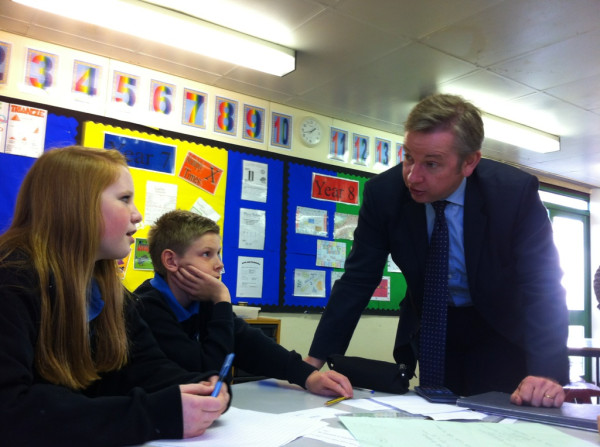The government’s already controversial free schools programme in England ran into trouble again this week, with the publication of an Ofsted inspection report on Greenwich Free School which found that “too few students make good progress across the different subjects taught in the school”, alongside Labour Party analysis which suggests that 70% of the schools are still not full two years after opening.
Despite the Department of Education’s emphasis that free schools create “a more autonomous and diverse school system that offers parents choice and concentrates on improving standards”, the programme has endured a series of controversies since its inception, leading to concerns over its accountability and value for money. There have been allegations of fraud at the Kings Science Academy in Bradford and of the first 13 Ofsted inspections of free schools that have opened since September 2011, only one was deemed ‘outstanding’ and seven rated as ‘good’, while four ‘required improvement’ and one was found to be ‘inadequate’.
Despite these findings, the government has continued to support the programme, providing £60 million of ‘extra’ funding to the schools to support them through their first year of opening. This was on top of the £8.3 billion (£1 billion over budget) spent on setting up free schools between April 2010 and March 2012, and the standard per pupil revenue funding received by all schools in England. However, according to the Labour Party’s analysis, the failure of the schools to reach their capacity means that the government is funding free schools places for 1,500 more pupils than are actually attending. Crucially, the Party argues, this is money that could be spent on addressing the school places shortage found in many parts of the country, and especially in London.
According to research carried out by London Councils, due to a growing population the capital is facing a shortfall of 118,000 school places by 2016/17 – 42 per cent of the projected 565,000 national shortfall. The rise of the free schools programme poses an extra challenge for London’s local authorities in trying to address this problem: over half of the city’s current secondary schools are now academies or free schools, which are under no obligation to expand their capacity due to their being out with local authority control. A December 2013 report by the National Audit Office also argued that too many free schools were being opened in areas where there is no urgent need for extra primary school places. This report formed part of the Labour Party’s analysis, enabling them to argue that 17,500 new places could have been provided if the schools had been located in areas where the shortfall is particularly pressing.
The charter school movement in New York, which has heavily influenced the English free schools programme, has faced similar criticism. In a move seen by some as an intention to ‘kill’ the movement, the city’s recently elected Mayor Bill de Blasio has placed a 12-month moratorium on allowing new charter schools to open in the same buildings as existing public schools, and has also redirected $210 million of capital funding to improve early years provision, with the result that some providers are no longer planning to open new charter schools in the city.
Despite the criticism, the government looks set to continue the programme, focusing on the 29 free schools rated by Ofsted as either ‘outstanding’ or ‘good’ so far. In response to the report on Greenwich Free School, a spokesman for the Department of Education praised the achievements made by free schools so far and argued that “seven in 10 free schools are in areas with a shortage of places” and that additional funding from the government has allowed councils to create an additional 260,000 places in areas of need. The more positive findings of the Greenwich inspection were also noted, particularly in terms of the school’s provision of a “broad and balanced curriculum” and the behaviour of its students. Alongside the Greenwich report, yet less widely covered in the media, Ofsted published a report on Reach Academy Feltham, a free school in Middlesex opened at the same time as Greenwich, which praised the school for the ‘outstanding’ education it provides to its pupils, with many pupils exceeding national levels of progress.
The free schools programme also looks set to continue should there be a change of government come 2015, with the shadow education secretary Stephen Twigg indicating that although no more new free schools would open under a Labour government, existing ones would not be forced to close.
Further reading (please note you must be a member to view these resources)
Free schools free-for-all?, IN Labour Research, Vol 103 No 1 Jan 2014
Establishing Free Schools: session 2013-14 (HC 881)
Do the maths: tackling the shortage of school places in London (2013 edition)
Share
Related Posts
A recent item on BBC Radio 4’s Today programme generated an unusually high number of responses from listeners. A man who had lost his job in the financial services sector at the age of 57 described his difficulty in trying ....
By Donna Gardiner While free school meals (FSM) have been available in England on a means-tested basis since 1944, recent years have seen a renewed focus upon the potential benefits of providing free school meals to all school-aged children. Currently, ....
By Robert Kelk and Chris Drake A new start for an old challenge? The recent appointment of Marc Lemaître as the European Commission’s director general for research and innovation (R&I) has returned Europe’s R&I gap to the spotlight. Previously head ....
By Hannah Brunton UNESCO’s Global Media and Information Literacy Week 2022 takes place from 24-31 October 2022 under the theme of “Nurturing Trust”, giving governments, educators, information professionals, and media professionals the chance to discuss and reflect on critical issues ....

